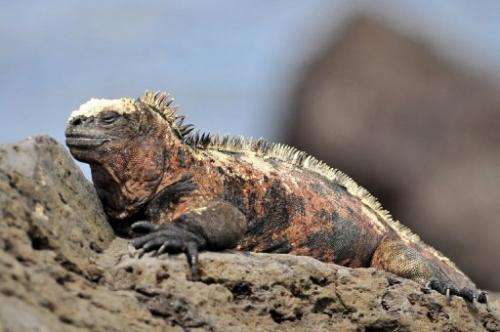A marine iguana at Floreana island, Galapagos Islands, Ecuador, in May 9, 2009.
A court in Ecuador has convicted a German tourist of trying to smuggle four threatened iguanas out of the Galapagos Islands in his luggage, authorities said Sunday.
Dirk Bender was convicted "of having altered the local ecosystem of the archipelago," park authorities said.
The Galapagos National Park has requested the maximum four-year jail term for Bender, who should be sentenced in the coming days.
Bender was arrested at the airport on Baltra Island on July 8 after park officials noticed him carrying a suspicious package, which was found to contain four lizards wrapped in canvas.
The hidden reptiles were Galapagos Land Iguanas (conolophus subcristatus), which the International Union for Conservation of Nature ranks as "vulnerable" on its Red List of Threatened Species.
In 1976, wild dogs wiped out a colony of around 500 of the iguanas on the island of Santa Cruz. The national park rescued around 60 survivors and launched a captive breeding program to try to revive the species.
The yellowish lizards can grow to be over a meter (three feet) long, with males weighing up to 13 kilograms (30 pounds).
The iguanas have been seen to raise themselves off the ground to allow finches to eat ticks off their bellies—the same Galapagos finches that inspired Charles Darwin when he visited the islands in the 19th century.
The Galapagos Islands, situated about 1,000 kilometers (620 miles) off Ecuador's coast, gained fame when Darwin visited in 1835 to conduct research that led to his revolutionary theories on evolution.
The archipelago has been a UNESCO World Heritage Site since 1978 for the rich plant and animal life found both on land and in the surrounding sea.
(c) 2013 AFP
























